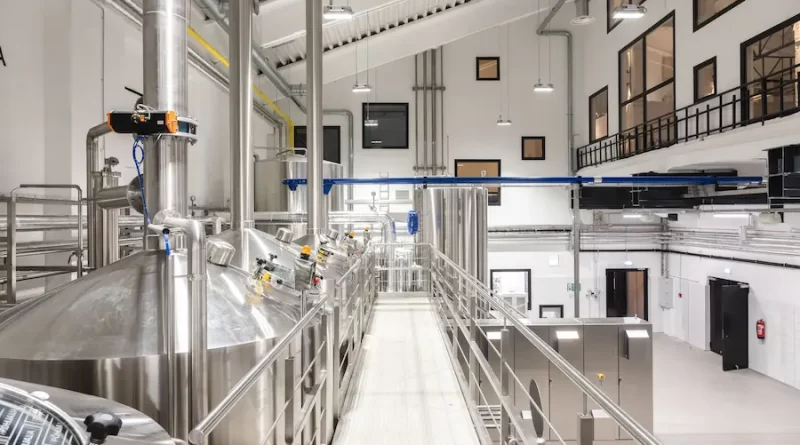The ABCs of Equipment Setup in Your Brewery
A meticulously planned and efficiently executed arrangement of brewing equipment forms the backbone of a successful brewing operation. Beyond the seamless flow of production, this setup ensures consistent product quality, enhanced safety measures, and streamlined operations, all of which are crucial elements to include in your brewery business plan. In this article, we’ll explore the key components of setting up your brewery equipment, covering everything from assessing your space to maintaining a clean environment.
Assess Your Space and Needs
The first step in establishing a successful brewery equipment setup is to conduct a meticulous assessment of your available space and brewing requirements. Before purchasing an equipment or planning your layout, obtain a clear understanding of the dimensions and structure of your brewing area. This assessment will not only prevent spatial limitations during production, but also optimize operational flow. Furthermore, think about your production goals and anticipate future expansion to choose equipment that aligns with your long-term vision.
Basic Equipment and Layout
With your space assessment in hand, the next phase involves the selection and arrangement of your brewing equipment. The fundamental components of a brewery setup include the mash tun, brew kettle, fermenters, and other specialized equipment. A logical and intuitive layout is imperative for a smooth brewing process. Picture a workflow that progresses seamlessly from mashing to boiling, fermentation, and packaging. Placing your equipment in this logical order minimizes unnecessary movement and optimizes the utilization of resources.
Plumbing and Electrical
One of the unsung heroes of brewery operations is the plumbing and electrical system. Efficiently designed plumbing ensures a seamless transfer of liquids, be it water, wort, or cleaning solutions, throughout the brewing process. Employing food-grade materials for plumbing is paramount to upholding hygiene and quality standards. Likewise, the electrical setup underpins the functionality of various equipment, from pumps to temperature controllers. Engaging with professionals who specialize in brewery plumbing and electrical work is prudent to ensure compliance with safety regulations and standards.
Temperature Control and Ventilation
Temperature control is a cornerstone of brewing excellence, influencing factors, such as fermentation, enzymatic activity, and flavor development. Precise temperature management ensures consistency in your brews. Temperature control systems, such as glycol chillers and heat exchangers, play a pivotal role in maintaining optimal conditions. Moreover, ventilation is essential to disperse heat and eliminate potentially harmful fumes, creating a comfortable and safe working environment for brewers.
Emergency Systems
In an industrial setting, safety is a primary concern. Breweries are no exception. Integrating emergency shutdown systems safeguards against potential hazards. Gas leaks, power failures, and equipment malfunctions are unforeseen circumstances that require swift action. Implementing emergency switches and alarms empowers your team to respond effectively, minimizing risks to both personnel and the brewing process itself. Regular training sessions ensure that your staff is well-prepared to handle emergencies with confidence.
Efficient Workflow and Ergonomics
Efficiency in a brewery setup translates to time and resource savings. Designing a workflow that minimizes unnecessary steps enhances productivity. Ergonomics, the science of equipment design for optimal human interaction, is a crucial consideration. Adjustable counter heights, ergonomic handles, and strategically placed equipment minimize strain on brewers’ bodies, contributing to a safer and more comfortable work environment.
Cleaning and Maintenance
Maintaining a clean and sanitized brewing environment is non-negotiable. This not only guarantees the quality of your brews, but also prolongs the lifespan of your equipment. By implementing a regular cleaning schedule for both your equipment and facility, you can prevent the accumulation of contaminants that might affect the final product. Consistently maintaining essential components, such as pumps and valves, ensures their reliable performance and minimizes the risk of production setbacks due to breakdowns.
Implement Quality Control Measures
In the pursuit of brewing excellence, the implementation of quality control measures holds paramount importance. Establish protocols that monitor and maintain the quality of your brews, ensuring consistency and meeting desired standards for every batch. Regular testing of factors, such as pH, gravity, and flavor profiles, helps identify deviations from the norm. By integrating these measures into your equipment setup, you can detect potential issues early in the brewing process and make necessary adjustments. Implementing robust quality control not only upholds your brewery’s reputation but also enhances customer satisfaction and fosters brand loyalty.
Establishing an efficient and safe brewery setup is a process that requires meticulous planning, careful equipment selection, and constant attention to quality control measures. From assessing the available space to the integration of ergonomic principles and efficiency in workflow design, each step plays a critical role in the smooth operation of the brewery and the production of high-quality brews. As you set up your brewery equipment, remember that the ultimate goal is not just to produce excellent beer, but also to create a sustainable, safe, and efficient brewing operation that stands the test of time.

